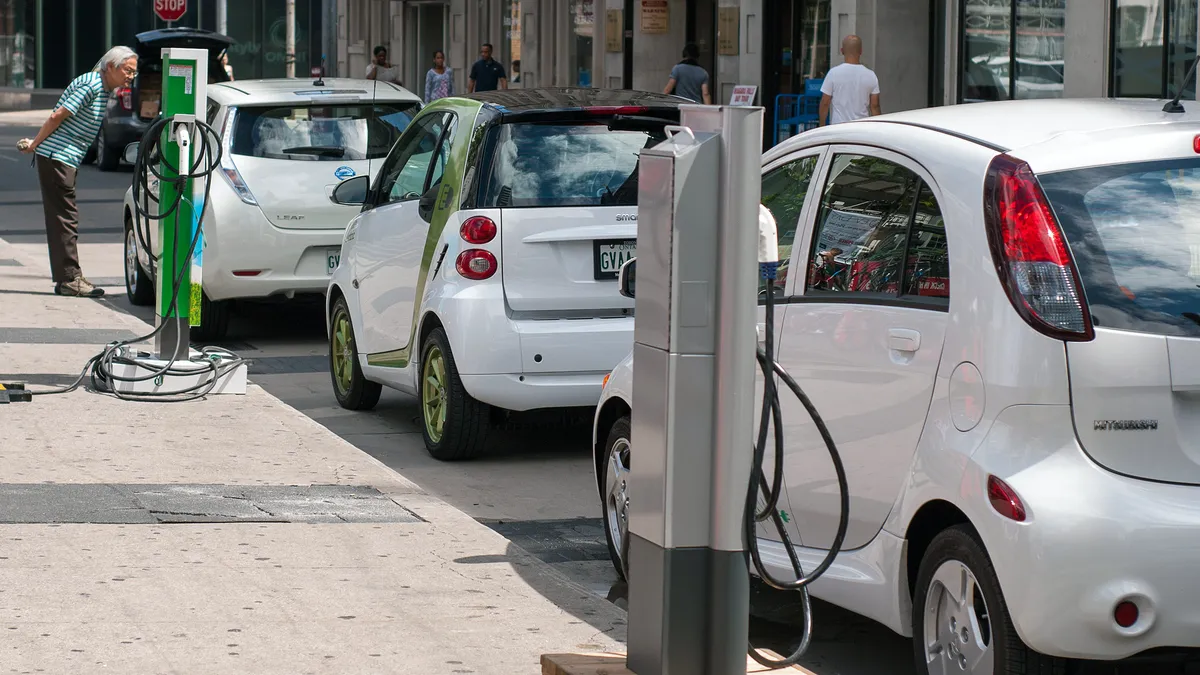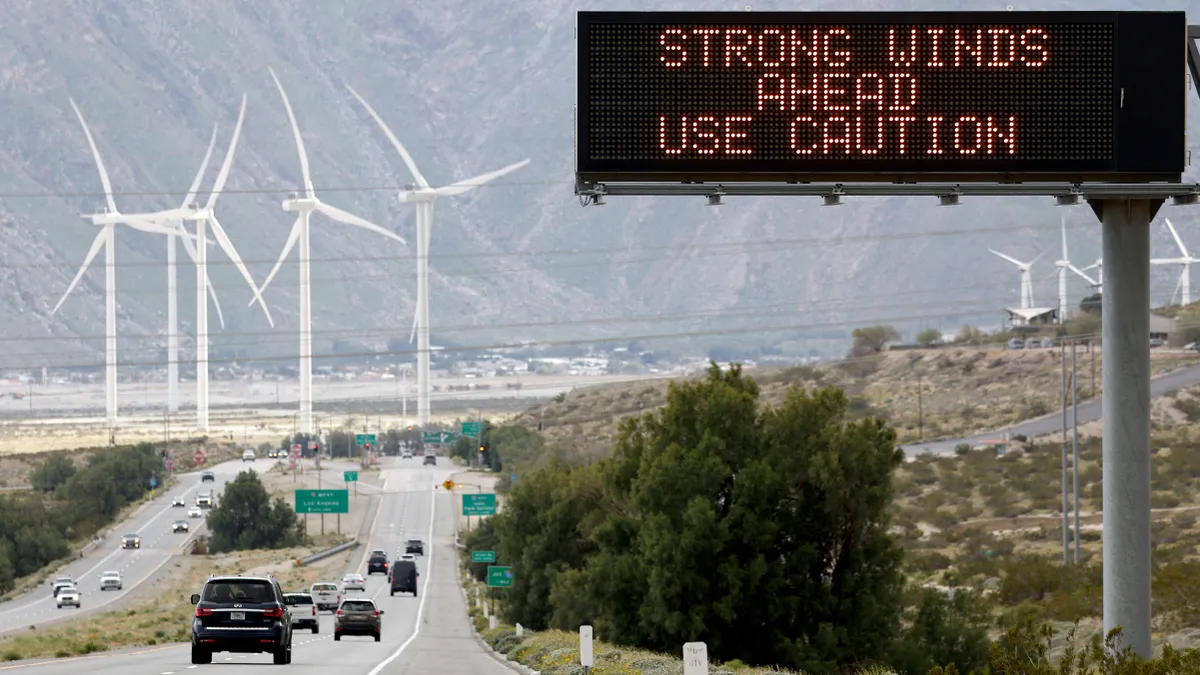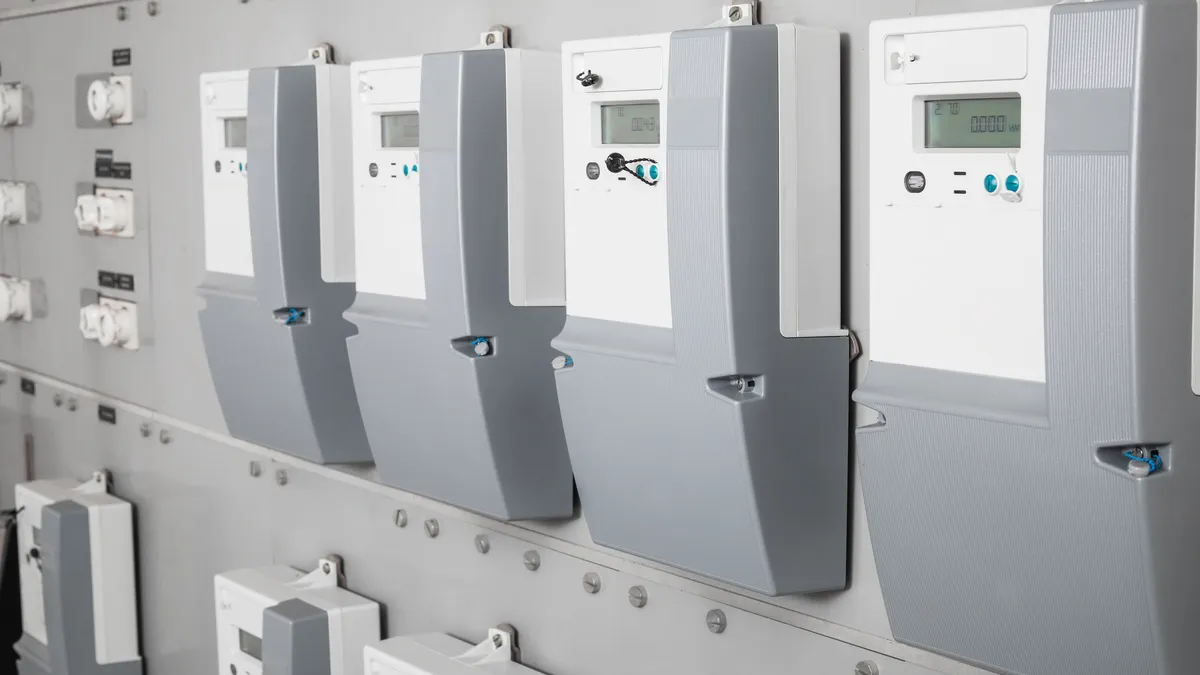When it comes to electric vehicles, California's utilities are a lot like therapists: They want to help drivers overcome range anxiety.
For the last few years, the state's three largest investor-owned utilities have been rolling out plans, pilots and ports in their bid to push transportation electrification. Gov. Jerry Brown (D) has set a goal of 5 million zero-emission vehicles on the state's roads by 2030, and new research indicates it will take about a quarter million new charging ports to get there.
California leads the United States in EVs, but faces the usual challenges to broader adoption — installing ports in difficult-to-serve areas and disadvantaged communities, while preparing to manage the load growth on the horizon.
That load growth is expected to be significant — new research estimates that residential and nonresidential EV chargers in California could add more than 1 GW to peak demand by 2025 — but utilities are confident they can supply the energy without problems.
David Almeida, manager of clean energy programs at Pacific Gas & Electric, said the utility sees transportation electrification as a "beneficial load growth opportunity," rather than a concern.
“Increasing load helps us run our system more efficiently, and reduces the overall costs of running our system," Almeida told Utility Dive. Both shareholders and customers benefit in the long-term, he said, and EV adoption could ultimately help provide a rate reduction "if we get vehicles to scale."
PG&E begins 7,500-port pilot
Earlier this year, PG&E launched a new EV Charge Network program, working with businesses and charging companies to install 7,500 level 2 chargers across Northern and Central California. A major focus of the program is on disadvantaged communities and areas more difficult to serve, like condominiums, apartment buildings and workplaces.
Almeida began working on the pilot concept in 2013, and the utility filed an application the next year. It took about two years to get approval from the California Public Utilities Commission, and for the last year, PG&E has been preparing to roll it out. Now two months into the program, a few projects have been completed; about 140 applications have come in from businesses, office buildings and apartment buildings; roughly three dozen are being reviewed; and almost 50 have passed through eligibility screening or are in construction.
"The construction queue is scheduled out until May," Almeida said.
PG&E structured the program to give more choice to customers who want to host an EV charging station. About 35% of the 7,500 chargers will be utility-owned, while customers will own the bulk. The utility, however, is only allowed to own equipment in multi-unit residential buildings, at workplaces or in disadvantaged communities.
PG&E will own and operate its stations, with a one-time fee payable by businesses, but most customers will own and operate the charging infrastructure. Under that model, PG&E will provide a rebate to incentivize business owners and will install equipment "from the pole to the parking spot," known as the "make-ready" model, Almeida said. A third-party vendor would then develop the station.
PG&E's utility-owned chargers "will focus on areas where the market is not delivering," Almeida said. The utility has a goal of installing 15% to 20% of chargers in disadvantaged communities, and so far about 18% of applications have been from those areas.
PG&E is trying to get a minimum of 10 charging spaces per location, as the majority of the cost in building charging stations comes from trenching and the conduit from power to vehicle. Almeida said the utility is "not seeing a lot of adoption" from multi-unit dwellings so far, as the expense acts as a cost barrier. PG&E is seeing more adoption at workplaces, but still "not as much as we would like," Almeida said.
Managed charging
While utilities are confident they can deliver energy for customers' charging needs, the key will be doing it in a way that optimizes the system rather than adding more stress at peak load times. That's a big reason Almeida wants to see more workplace charging — many vehicles are parked together in the middle of the day, and could potentially soak up excess solar.
PG&E is looking to rate structures as a way to take some control over the load. All of PG&E's commercial rates are time-of-use, so Almeida said there is an inherent demand management aspect.
While the stations can participate in demand response programs, PG&E is not requiring that yet. However, a subset of customers will participate in the utility's load management program and here the utility is keenly interested in the results.
"We're really testing a lot of things in California and hoping those lessons learned can be shared. ... EVs can impact the distribution system, but all that can be solved with effective planning and being forward looking in how you can manage the assets."

David Almeida
Manager, Clean Energy Programs, Pacific Gas & Electric
The customer who owns the charging station will always be the customer of record and pay the bill from PG&E, and because it is a commercial account it will be on a TOU rate. However, site owners have flexibility in how they charge their customers, and it is possible for pricing signals to be lost in the mix.
An EV charging station owner can transfer the costs directly to the consumer, a simple pass-through that would preserve PG&E's price signals. But Almeida said site owners want flexibility in how they charge customers, perhaps making the station free, or a flat rate for simplicity.
"If the customer chooses the custom pricing option, we lose that price signal that we have in the time-of-use structure, that encourages charging to follow the needs of the grid," Almeida said.
In response, PG&E has incorporated a load management program that leverages two pilots being developed as demand response resources. The utility will examine day-ahead pricing from wholesale markets, and then send site owners signals to decrease charging when there is stress on the grid and to increase charging when there is excess solar.
"If they respond, we provide an incentive; if they don't, we're not penalizing them right now," Almeida said. "What's unique about this, is the incentive will go to the site host. We want to test if that works, or if you really need to go down to the driver."
Southern California Edison prepping demand response
Like PG&E, Southern California Edison's initial infrastructure rollout did not include any demand response programs, but it did ensure the equipment was capable and required customers to participate once such programs were in place.
SCE has been filing quarterly reports on its Charge Ready Pilot Program, updating regulators on progress made since April 2016, when the $22 million project launched. The utility has about 1,000 ports installed or in construction at 60 sites and ultimately expects to reach 1,250 under the program.
About two-thirds of the charging stations have been installed at workplaces; almost a quarter at "destination centers;" and about 10% will service fleet vehicles. As with PG&E, SCE has struggled to reach multi-unit dwellings and has only installed about 3% of its charging stations in those buildings.
The pilot "will attempt to shift load to periods of high solar generation during spring and winter months, and decrease load during steep ramping periods that occur in late afternoons and evenings," SCE said in a March 23 filing with the CPUC. The utility also noted it has proposed new time-of-use rates that would better match demand with renewable supply.
SCE wants to establish three new time-of-use rates for commercial customers with electric vehicles, with no demand charge for the first five years.
The Charge Ready demand response program will launch in the second quarter of this year.
SCE will also seek approval for a second, larger phase of the Charge Ready program that "would provide infrastructure for many thousands more charging stations."
More programs ahead
California regulators issued a proposed decision March 30 that would approve, with some changes, four transportation electrification projects and one rate design proposed by the three IOUs. If approved, it would be the second round of utility EV investments authorized in response to Senate Bill 350, which spelled out the state's EV goals.
California approved the first batch in 2016, though regulators waited until December of that year to sign off on PG&E's proposal, after scaling back the EV Charge Network. Where the first round of projects focused on the consumer, light-duty sector, this new push would focus on heavy-duty, freight and fleet vehicles.
The CPUC's March 30 proposed decision would authorize budgets totaling approximately $589 million, with another $23 million set aside for evaluations. PG&E would develop two of the projects: a $22 million make-ready program aimed at DC Fast Charging and a $207 million "FleetReady" program where PG&E would prepare infrastructure for at least 700 sites to support the electrification of at least 6,500 medium- or heavy-duty vehicles. The utility wants to install infrastructure at 52 sites to support 234 fast charging stations.
The commission is also considering a $137 million residential charging program proposed by San Diego Gas & Electric, which would provide rebates to customers to install up to 60,000 Level 2 charging stations at home.
Southern California Edison’s $201 million Medium- and Heavy-Duty Infrastructure Program is similar to PG&E's, and would also prep 700 sites to support up to 7,000 vehicles.
Almeida, who spoke with Utility Dive before the proposed order was issued, said PG&E is expecting approval within the next couple of months. Considering the second batch of programs combined with the current efforts, he said the utility is slowly developing a "portfolio of options" that will help expand the EV market.
"We started with [just] a rate for residential customers," he said. "We've really expanded opportunities for customers and for investments ... now we have a charging program to address the passenger market; we've got pilots to learn how to really crack into that medium- and heavy-duty market and figure out what works; and we're on the eve of getting approval for DC Fast Chargers."
California's pilot programs can help other utilities which must eventually wade into the EV issue. Earlier this year, the Smart Electric Power Alliance warned that many utilities risk being overrun by new peak demand unless they move quickly to adjust their system, rates and programs.
But Almeida said that threat can be managed through a combination of time-of-use rates, demand response programs and local charge management.
"There's a lot of stumbling around in the utility space," Almeida said. "We're really testing a lot of things in California and hoping those lessons learned can be shared. ... EVs can impact the distribution system, but all that can be solved with effective planning and being forward looking in how you can manage the assets."























